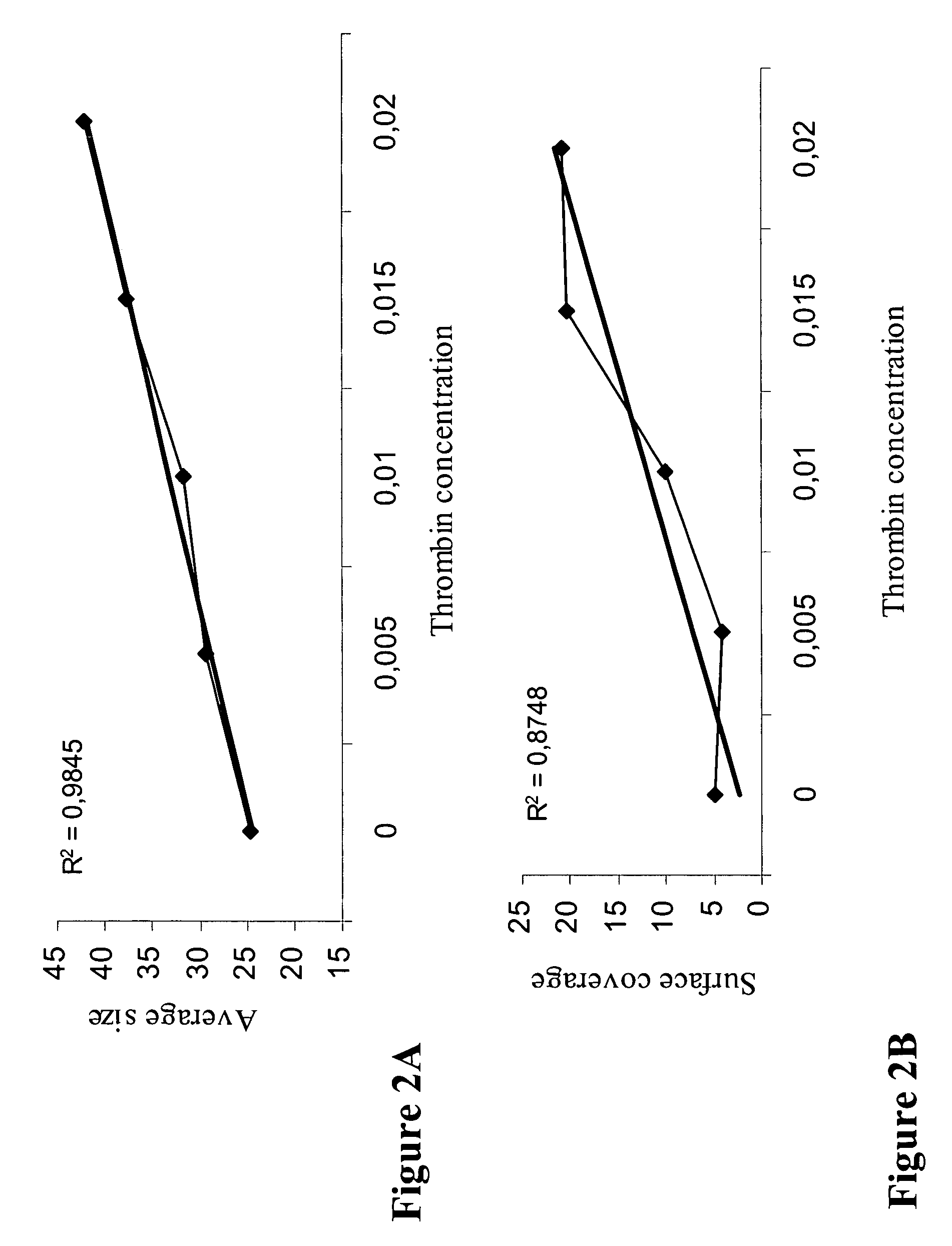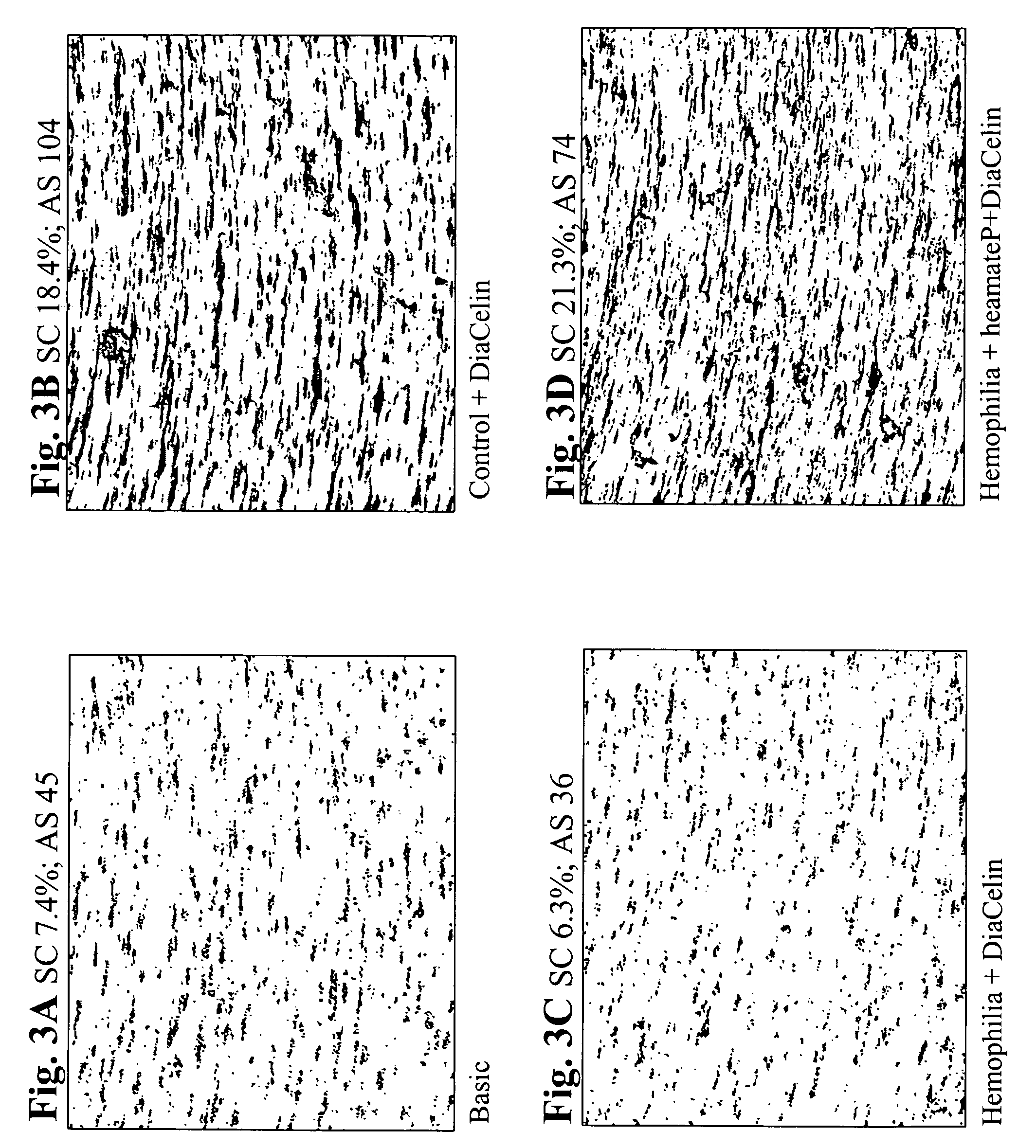Method and system for determining platelet-mediated clot formation
a platelet-mediated clot and platelet technology, applied in the field of thrombosis and hemostasis, can solve the problems of excess clot formation, thrombophilia, and slow blood flow in the vessel, and achieve the effect of preventing thrombophilia and preventing thrombophilia
- Summary
- Abstract
- Description
- Claims
- Application Information
AI Technical Summary
Benefits of technology
Problems solved by technology
Method used
Image
Examples
example 1
Factor Xa Mediated Clot Formation
[0137] Bovine factor Xa was dissolved in normal saline containing 0.5% BSA to yield a stock solution of 7Units / ml. The stock solution was stored at −20° C. in small aliquots. Before use, the aliquots were thawed at 37° C. and the factor Xa was diluted 1:100 in the saline BSA solution to obtain a solution containing 0.07 Units / ml. One μl of the diluted solution contained 7×10−5 unit of factor Xa.
[0138] On the upper cap of a CPA well set attached to a magnetic stirrer were placed 1.5 μl of 1M CaCl2 solution and 2 μl of the diluted factor Xa solution (1.5×10−5 U). As control, no factor Xa or CaCl2 were added to the same blood sample.
[0139] The stirrer assembly was placed in a CPA well containing 130 μl of whole blood obtained from a healthy subject and spinning at about 750 rpm started immediately. After 2 minutes the spinning was stopped, the magnet and cap were removed from the well and the well was washed with tap water to remove all residual bloo...
example 2
Determining Correlation Between Surface Coverage / Clot Size and Concentration of Clot Initiator
[0143] In this assay, increasing concentrations of thrombin, which promotes fibrin clot formation, were applied to normal blood samples. In particular, thrombin was placed on the tip of the rotating conical disc, in an amount yielding final concentration according to the points indicated in FIG. 3A and FIG. 3B. The conical disc was then applied in the well containing 130 μL of citrated whole blood, rotated at 720 rpm for two minutes followed by washing and staining of the well. For quantitative determination of fibrin clot formation image analysis (using Impact-R image analysis system, DiaMed, Switzerland) was performed.
[0144] Image analysis of the stained fibrin clots was performed expressing the amount of clot in terms of % of surface covered (SC, %), and the average size (AS, μm2) of the stained clots.
[0145]FIG. 2A shows that there is a significant correlation (R2=0.9845) between the ...
example 3
Use of the aPTT Reaction to Determine Factor VIII Deficiency
[0147] In the following assay undiluted aPTT reagent Diacelin (Daimed, Switzerland) was used to initiate clot formation. In particular, on the upper cap of a CPA well set attached to a magnetic stirrer 1.6 μl of 1M CaCl2 and 3 μl of Diacelin were placed. The stirrer assembly was placed in a well containing 130 μl of whole blood and spinning at 720 rpm started immediately.
[0148] After 2.5 min. the spinning was stopped, the magnet and cap were removed from the well and the well washed with tap water to remove all residual blood. The washed wells were then stained using May-Gruenwald stain (Sigma) and clot % surface coverage and clot average size was quantitatively determined using an image analysis system (Impact-R).
[0149]FIG. 3A shows the results of the assay when no aPTT reagent or CaCl2 were added to the blood. As a result, only single adsorbed platelets and platelet aggregates are shown, with no fibrin clots formation....
PUM
 Login to View More
Login to View More Abstract
Description
Claims
Application Information
 Login to View More
Login to View More - R&D
- Intellectual Property
- Life Sciences
- Materials
- Tech Scout
- Unparalleled Data Quality
- Higher Quality Content
- 60% Fewer Hallucinations
Browse by: Latest US Patents, China's latest patents, Technical Efficacy Thesaurus, Application Domain, Technology Topic, Popular Technical Reports.
© 2025 PatSnap. All rights reserved.Legal|Privacy policy|Modern Slavery Act Transparency Statement|Sitemap|About US| Contact US: help@patsnap.com



